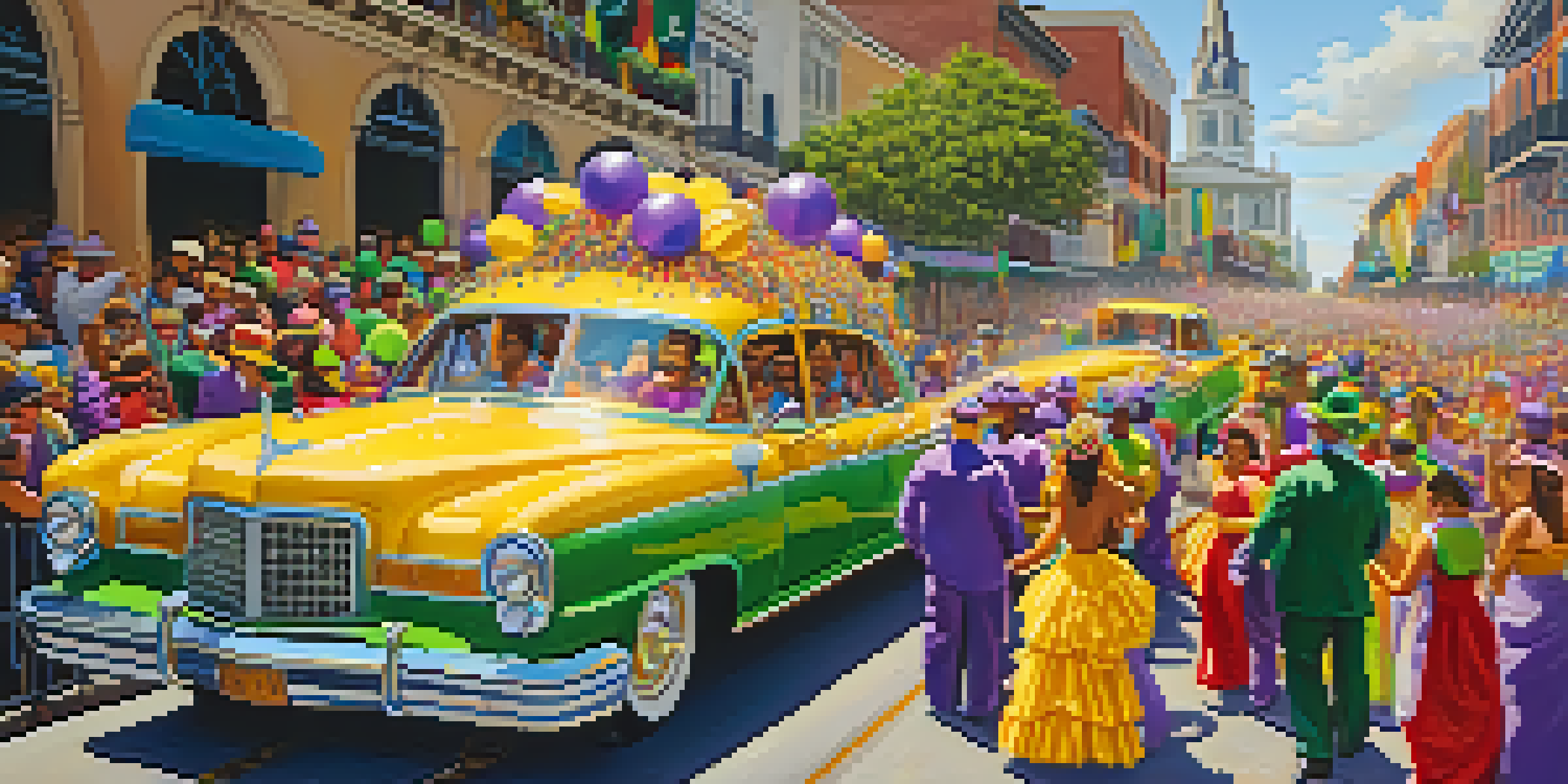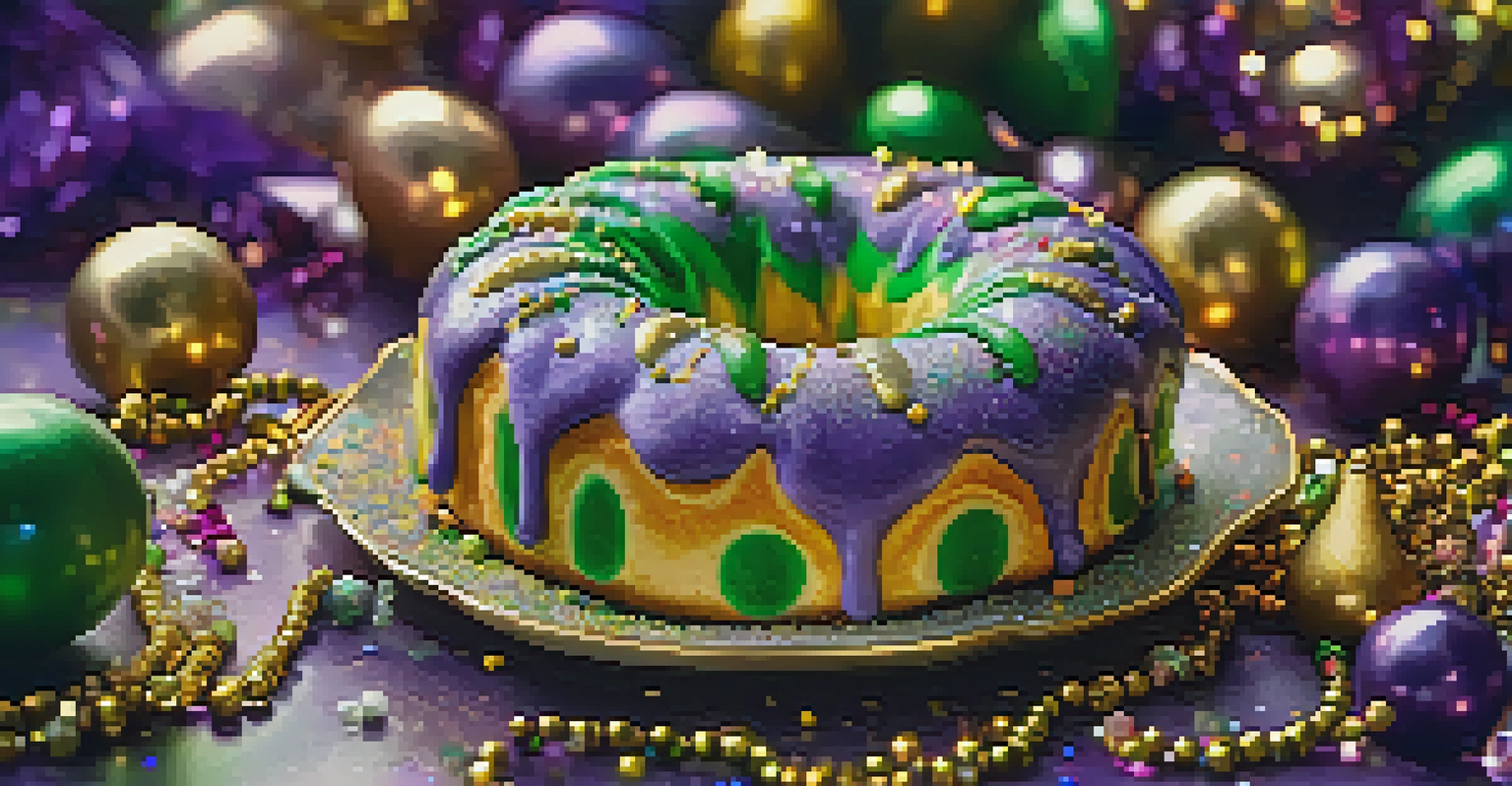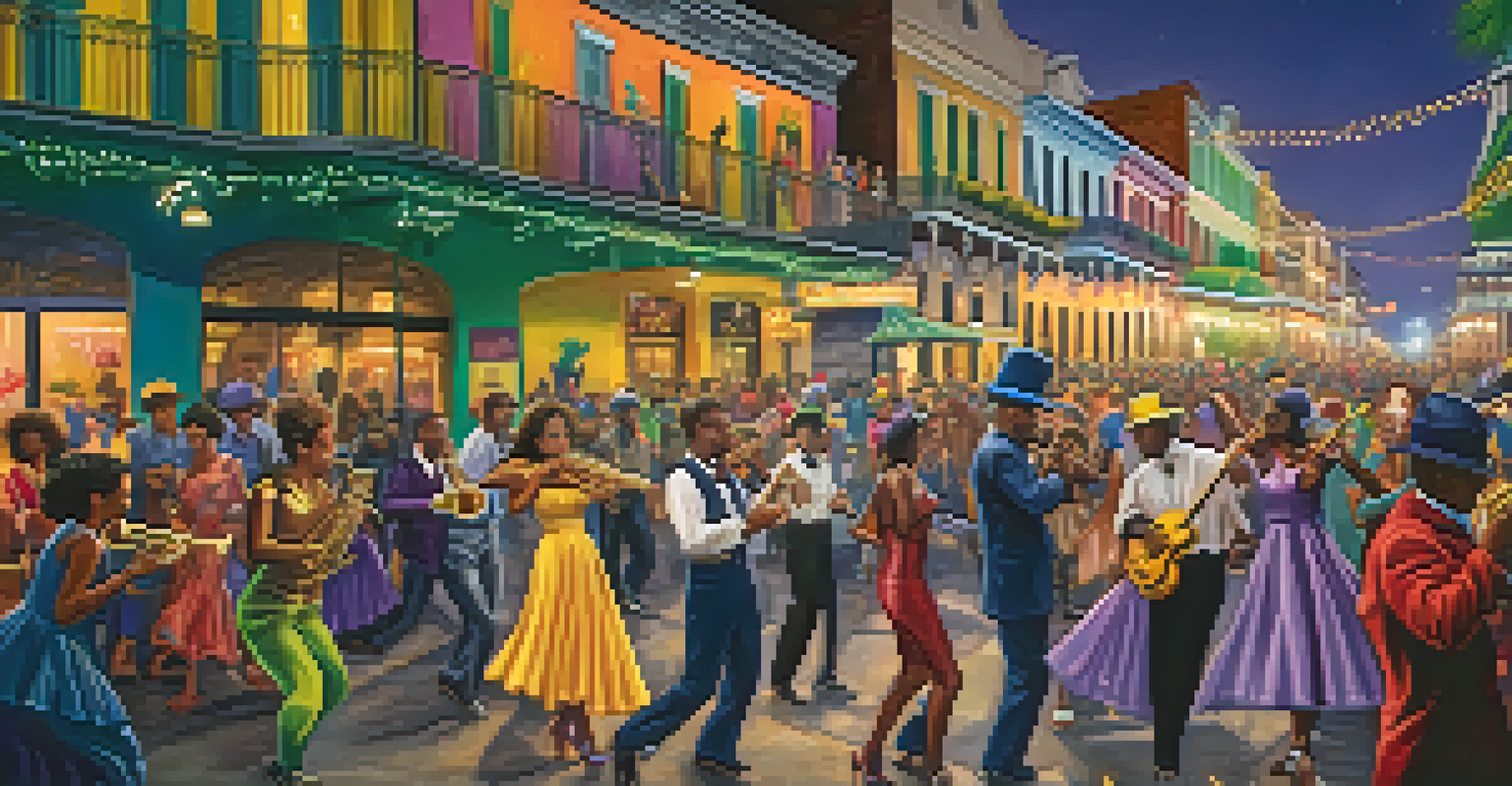Mardi Gras: The Cultural Significance of Louisiana's Festival

The Origins of Mardi Gras: A Historical Perspective
Mardi Gras, meaning 'Fat Tuesday' in French, has roots that trace back to ancient pagan celebrations of spring and fertility. Over the centuries, it evolved into a Christian tradition marking the last day before Lent. Louisiana's unique blend of French, Spanish, and African influences has shaped its distinctive Mardi Gras festivities, making it a vibrant cultural melting pot.
Mardi Gras is a celebration of community, a time when people from all walks of life come together to share joy and laughter.
The festival made its way to North America with early French settlers in the late 17th century. By the early 19th century, New Orleans became the center of Mardi Gras celebrations in the United States. The first organized parade took place in 1837, laying the groundwork for the elaborate festivities we see today.
Mardi Gras is more than just a party; it’s a celebration of community and heritage. Each year, locals and visitors alike come together to partake in this joyous occasion, unearthing layers of history and tradition that continue to flourish.
Mardi Gras Traditions: Parades, Costumes, and More
One of the most iconic elements of Mardi Gras is the parades, which showcase elaborate floats and vibrant costumes. Each float often represents a specific 'krewes,' or social clubs, that take part in the festivities, adding a sense of friendly competition and creativity. The parades are a feast for the senses, filled with music, laughter, and the delightful chaos of bead-throwing.

Costumes are another essential part of Mardi Gras. Participants often don vibrant masks and outfits, reflecting the spirit of revelry and anonymity that the festival encourages. This tradition dates back to its origins, where masks allowed people to transcend social norms and engage freely with one another.
Mardi Gras: A Cultural Melting Pot
The festival blends French, Spanish, and African influences, showcasing a rich tapestry of community and heritage.
Food also plays a significant role in the celebrations. King Cake, a sweet pastry decorated in the festival's signature colors of purple, green, and gold, is a staple during Mardi Gras. Sharing this delicious treat symbolizes community and togetherness, making every bite a celebration of friendship.
The Role of Music and Dance in Mardi Gras Celebrations
Music and dance are the heartbeat of Mardi Gras, setting the tone for the festivities. Jazz, a genre born in New Orleans, fills the streets as musicians serenade crowds, creating an infectious atmosphere of joy. From traditional brass bands to contemporary artists, the sounds of Mardi Gras resonate with every corner of the city.
The colors of Mardi Gras—purple, green, and gold—reflect the values of justice, faith, and power that unite us all.
Dance is equally important, with many revelers joining in spontaneous celebrations. Whether it’s a choreographed performance or a free-spirited jig in the street, dance allows individuals to express their joy and connection to the festival. It’s a reminder that Mardi Gras is not just an event, but a shared experience.
These musical and dance traditions reflect the cultural diversity of Louisiana, blending African, European, and Caribbean influences. As participants sway to the rhythm, they celebrate not only the festival itself but also the rich tapestry of history that defines Mardi Gras.
The Significance of Colors: Purple, Green, and Gold
The vibrant colors of Mardi Gras—purple, green, and gold—carry deep significance. Purple represents justice, green symbolizes faith, and gold stands for power. These colors were officially adopted by the festival in 1872, when the visiting Russian Grand Duke Alexis Romanoff chose them for his royal celebration.
Each color is more than just a visual delight; it embodies the values and aspirations of the community. When participants adorn themselves with these colors, they do so with a sense of pride and unity, reinforcing their collective identity during the celebration.
Economic Boost from Festivities
Mardi Gras generates millions in revenue for local businesses, significantly impacting Louisiana's economy.
The use of these colors extends beyond attire; they are prominently displayed on decorations, floats, and, of course, the beloved King Cake. This visual cohesion brings everyone together, creating a shared atmosphere that resonates with the spirit of Mardi Gras.
Mardi Gras: A Time for Community and Togetherness
At its core, Mardi Gras is a celebration of community. It brings together people from all walks of life, creating a sense of belonging that transcends differences. This unity is palpable during the parades, where thousands of participants and spectators join in the revelry, sharing laughter and joy.
Local traditions play a crucial role in fostering community spirit. Many neighborhoods have their own unique celebrations and events, encouraging residents to come together and celebrate their shared heritage. These grassroots festivities highlight the importance of local culture within the larger context of Mardi Gras.
As the festival unfolds, it serves as a reminder of the power of human connection. Whether it’s through shared meals, dance, or simply enjoying the festivities side by side, Mardi Gras strengthens bonds and creates lasting memories that transcend the festival itself.
The Economic Impact of Mardi Gras on Louisiana
Mardi Gras is not only a cultural celebration but also a significant economic driver for Louisiana. The influx of tourists during the festival generates millions in revenue, benefiting local businesses, hotels, and restaurants. This boost is essential for the economy, especially in a city like New Orleans that thrives on tourism.
Many small businesses rely heavily on the Mardi Gras season for their survival. From costume shops to food vendors, the festival provides opportunities for entrepreneurs to showcase their offerings to a wider audience. The unique atmosphere of Mardi Gras helps create a vibrant marketplace that supports local artisans and craftspeople.
Global Mardi Gras Celebrations
Similar festivities around the world reflect local customs while embodying the universal spirit of joy and community.
Moreover, the economic benefits extend beyond immediate sales. Mardi Gras fosters a sense of pride in local culture, encouraging residents to invest in their community. This long-term impact helps ensure that the traditions and values at the heart of Mardi Gras continue to thrive for generations to come.
Mardi Gras Around the World: Global Celebrations
While Mardi Gras is most famously celebrated in New Orleans, similar festivities take place around the globe. From Rio de Janeiro's Carnival in Brazil to Venice's Carnevale, these celebrations share common threads of joy, revelry, and cultural expression. Each location, however, adds its unique twist, reflecting local customs and traditions.
For instance, Carnival in Rio is known for its samba parades and vibrant street parties, drawing millions of visitors each year. In contrast, Venice's Carnevale is characterized by elegant masks and opulent costumes, showcasing the city's rich history and artistry. These variations remind us that Mardi Gras-like celebrations can take many forms, yet all embody the spirit of community.

Exploring these global celebrations offers a deeper understanding of cultural significance. They highlight the universal desire to come together in joy, celebrating life through music, dance, and shared experiences. Ultimately, Mardi Gras may be rooted in Louisiana, but its spirit resonates worldwide.